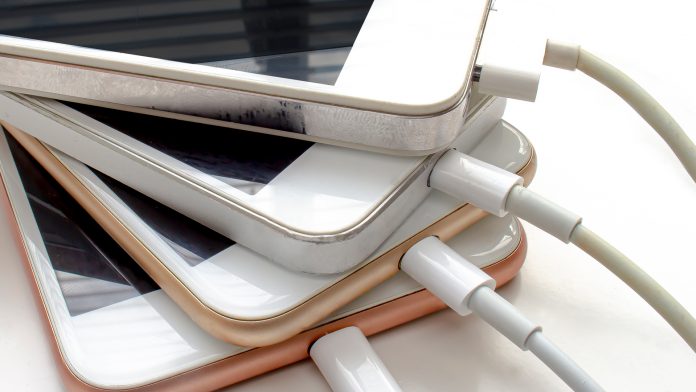The European Commission has proposed a common charger for electronic devices in efforts to alleviate the growing burden of e-waste.
The European Commission taken a bold step towards countering e-waste and consumer inconvenience that occurs as a result of the plethora of different and incompatible chargers for electronic devices.
A mountain of e-waste
In 2020, roughly 420 million mobile phones and other portable electronic devices were sold in the EU. On average, consumers own three mobile phone chargers and use two regularly. In spite of this, 38% of consumers report having difficulties at least once where they could not charge their mobile phone because accessible chargers were incompatible.
This is both inconvenient and expensive for consumers, who spend around €2.4bn annually on standalone chargers that do not come with electronic devices. In addition, discarded of and unused chargers are estimated to pile up to 11,000 tonnes of e-waste every year, which has vast negative connotations in terms of sustainability.
In the last decade, the number of mobile phone chargers has been reduced from 30 to three as a consequence of working with industry on a voluntary approach. However, now, the Commission is putting forward legislation in order to determine a common charging solution for all relevant devices.
Common charger for electronic devices
This novel proposal entails a revised Radio Equipment Directive – which is part of the Commission’s broader action to address the sustainability of products – whereby the charging port and fast charging technology will be standardised.
With this new legislation, the USB-C will become the standard port for all smartphones, tablets, cameras, headphones, portable speakers and handheld videogame consoles, which will permit consumers to charge their devices with the same USB-C charger, irrespective of the device brand.
Another core point addressed with the legislation is harmonised fast charging technology that will assist in the prevention of various manufacturers unduly restricting the charging speed. It will also help to make sure that charging speed is the same when using any compatible charger for a device.
As well as this, the Commission has proposed to unbundle the sale of chargers from the sale of electronic devices. This will guarantee that consumers can buy a new electronic device without a new charger.
This will enhance consumers’ convenience and limit the environmental footprint connected to the manufacture and discarding of chargers, thus establishing support for the green and digital transitions.
Finally, the new legislation will ensure that manufacturers provide necessary information surrounding charging performance, such as information on the power needed by the device and if it supports fast charging.
European green ambitions
Margrethe Vestager, Executive Vice-President for a Europe fit for the Digital Age, explained: “European consumers were frustrated long enough about incompatible chargers piling up in their drawers. We gave industry plenty of time to come up with their own solutions, now time is ripe for legislative action for a common charger. This is an important win for our consumers and environment and in line with our green and digital ambitions.”
Commissioner Thierry Breton, responsible for the Internal Market, added: “Chargers power all our most essential electronic devices. With more and more devices, more and more chargers are sold that are not interchangeable or not necessary. We are putting an end to that. With our proposal, European consumers will be able to use a single charger for all their portable electronics – an important step to increase convenience and reduce waste.









